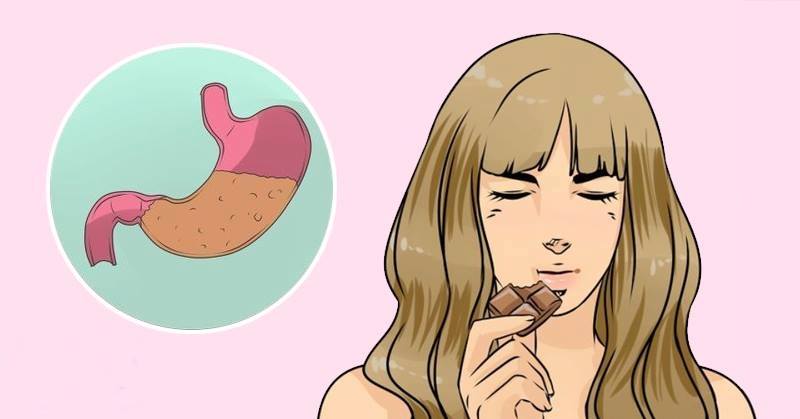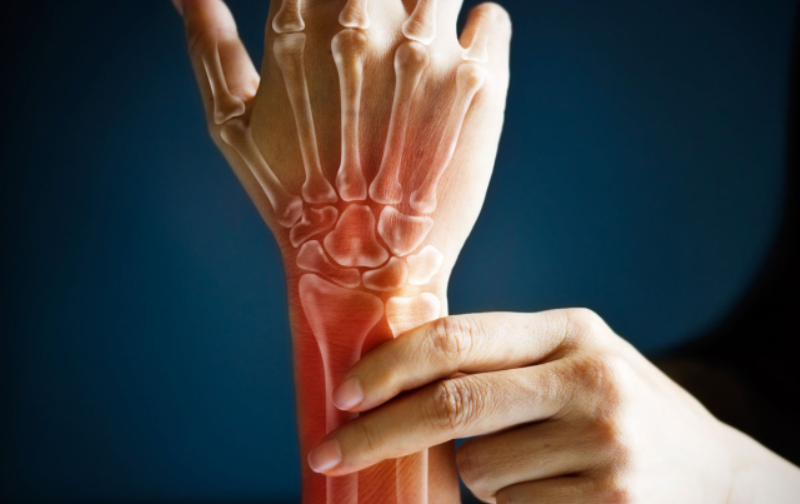Dark chocolate has soared in popularity over the past ten years because of its high content of iron, potassium, selenium, copper, fiber, zinc, magnesium, manganese, and phosphorus.
As a result, it became our first option whenever we felt like we needed something sweet because of stress, depression, frustration, obesity, diabetes, high blood pressure, or high cholesterol.
And it seemed like practically every circumstance called for dark chocolate! Since it is detrimental in the case of one situation, we mentioned almost.
A condition known as acid reflux, often known as heartburn or GERD (gastroesophageal reflux disease), causes chest pain, a sore throat, and a burning feeling in the esophagus, stomach, and even the mouth. The pain can ruin special evenings and feasts and can be extremely difficult and stressful.
In addition to low levels of stomach acid in the body, a weak lower esophageal sphincter (LES), obstruction of the upper intestines, and excess stomach acid are also potential causes of acid reflux.
Find out more about: Do You Suffer From Constipation, Bloating and Gas? Here’s How to Solve the Problem in One Minute
The LES can be weakened by the following foods:
- Alcohol
- Nicotine
- Peppermint
- Fish oil (dietary and supplementary)
- Caffeine
- Certain medications (ie. SSRI, hormonal treatments)
- Tomatoes
- Citrus fruits and juices (lemon, lime, orange, etc.)
- Chocolate
In particular, it has been discovered that chocolate lowers the pressure on the lower esophageal sphincter (LES), a condition known as “Chocolate-Induced Reflux.”
The LES is the muscle that connects the esophagus to the stomach. It opens to let food and liquids enter the stomach and shuts to stop them from coming back.
If it is weak, it allows food and liquids to spill back onto surfaces, which can irritate people. Additionally, it might become weakened as a result of an obstruction in the intestine or even a little intestinal bowel overgrowth (SIBO).
If acid reflux is not treated, it may result in ulcers, cancer, and mucosal membrane damage. As a result, you should always chew your meal thoroughly, eat slowly, and avoid trigger foods.
If you have mild acid reflux symptoms, you generally won’t visit the doctor to evaluate your condition and determine if you have too much or too little stomach acid. There is a test you can run, though, and all you need is apple cider vinegar.
This is how to perform it:
- Swallow a tablespoon of apple cider vinegar
- In the case you feel no burning sensation, the reason is hypochlorhydria (low stomach acid). In this case, you should increase the levels by subsequently adding 1 tablespoons of apple cider vinegar daily until you reach 6 tablespoons or a slight burning sensation occurs.
- In the case you experience no symptoms, you should maintain that dose and every day decrease it by one tablespoon unless you experience a burning sensation.
- In case you feel extreme burning and irritation after the consumption of the first tablespoon of apple cider vinegar, then you are suffering from hyperchlorhydria (excess stomach acid).
Note that you should consult your doctor and do the needed tests in order to make sure that the burning pain is not a symptom of a peptic ulcer or a heart condition.
Low Stomach Acid
- In the case of a low stomach acid, you should follow these steps:
- Always chew the food well
- After big meals, make sure you take digestive enzymes
- You should increase the intake of pineapple and papaya due to the natural bromelain and papain enzymes
- Continue dosing 1 – 6 tablespoons of apple cider vinegar daily in the case you do not feel any burning
- Massage the abdominal area to stimulate gastric secretions
- When you eat, take 3 deep breaths before the meal and smell your food, as the nose is the first step I digestion and it stimulates the secretion of saliva in the mouth and digestive enzyme release from the pancreas
- Deal with stress, by exercising, deep breathing techniques, meditation, walks in nature.
High Stomach Acid
In the case of a high stomach acid, you should follow these steps:
- Every day, add 1-2 teaspoons of sodium bicarbonate in a full glass of water
- You should not lie down immediately after mealsEat a few hours before going to sleep
- Lose weight and exercise regularly
- In order to relieve the gastric pressure and stress, regularly perform an abdominal and upper body massage
- Make sure you sleep more and your head should be a bit lifted
- When you eat, take 3 deep breaths before meals
- You should take acid suppression pharmaceutical agents (antacid calcium carbonate, Proton pump inhibitor H2-receptor antagonist, etc)
- Drink plenty of water
- Consume smaller meals and foods, like smoothies, which are easy to digest
- Manage stress, by meditation, exercise, reading books, swimming, gratitude, etc.
- Do not consume acidic foods (meat, vinegar, citrus fruits), avoid carbonated beverages and food triggers (chocolate, spicy food, tomatoes, pineapple, papaya, caffeine, alcohol, etc)and smoking for 1 week, and then again assess the intensity of discomfortThis illness can coexist with significant heart disorders, musculoskeletal problems, lung conditions, and gastric ulcers.
Therefore, you should see a doctor right away if you experience chronic discomfort, blood in the mouth or stools, or pain that doesn’t make sense.
Additionally, you might seek assistance from a Naturopathic doctor if you have been using acid-suppressing medications for a while and would like to try another natural alternative.
However, you should never start or stop taking any medications on your own because your body needs time to adjust to the drug withdrawal and the introduction of the new alternative therapy.
After reading this text you can also read about: Throw Away Your Glasses And Improve Your Vision With The Filatov’s Vitamin Bomb Recipe



